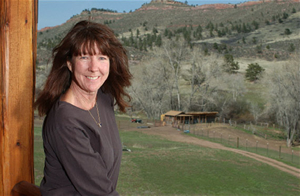In
Mutual Life Insurance Company v. Hillmon, 145 U.S. 285 (1892), the Supreme Court created an entirely new exception to the hearsay rule. The rule that a statement of future intention by the declarant is not hearsay did not exist in the law of evidence prior to the
Hillmon case.
John Hillmon
Hillmon involved a Kansas cowboy, John Hillmon, who left his new bride in the late 1870s to pursue establishing his own cattle ranch. Before leaving his home in Lawrence, Kansas, Hillmon purchased $25,000 worth of life insurance from three different insurance companies. ($25,000 was the equivalent of approximately $500,000 in current dollars.) On the Kansas prairie, at a place called Crooked Creek, Hillmon was allegedly accidentally shot by his business partner.
Frederick Adolph Walters
Agents and attorneys of the insurance companies almost immediately sprang into action. Although a coroner's inquest was held in Medicine Lodge, Kansas and determined that the dead man was John Hillmon and that he had died by accidental death, the insurance men had the body exhumed and brought to Lawrence where another inquest was held. (It was later revealed that the county attorney, the coroner and the jurors had been paid by the insurance companies). This time, the coroner's jury found that the body was of an unknown individual who had been killed through foul play.
The corpse. Is it John Hillmon or Hillmon's victim.
Sallie Hillmon, John's widow, filed suit in U.S. District Court against the insurance companies for breach of contract. The insurance companies maintained that the corpse was actually the body of Frederick Adolph Walters, a cigar maker who had drifted to Kansas from Ft. Madison, Iowa. Alvina Kasten, Walters fiancee had received a letter from Walters in which he told her that he was in Wichita and had been hired by a man named Hillmon to herd sheep because Hillmon had "promised me more wages than I could make at anything else." Walters had disappeared and never been heard from again. The insurance companies alleged that Walters had been killed by Hillmon and then passed off as Hillmon's body to collect the insurance proceeds.
Professor Marianne "Mimi" Wesson
The case eventually resulted in six trials, two resulting in verdicts for the Plaintiff which were both reversed by the Supreme Court, and four hung juries.
Professor Wesson and friend.
This very interesting book was written by University of Colorado law professor Marianne "Mimi" Wesson. Professor Wesson is also the author of a series of mystery novels. Where the historical record is silent, Professor Wesson has filled in the gaps with fictional accounts of what may have happened.
The book also recounts the efforts of Professor Wesson to identify the body of the man who was killed at Crooked Creek and solve the mystery. Gaining permission to exhume the body, DNA samples were obtained from the nearest living relatives of Hillmon and Walters. Unfortunately, water had seeped into the grave and only bone fragments remained from which no usable DNA could be extracted. However, an expert compared photographs of the living Hillmon and Walters with photographs of the corpse and concluded that although the body might be someone other than Hillmon, it was definitely not Frederick Walters as contended by the insurance companies in the six trials.
Professor Wesson at the grave of John Hillmon
Professor Wesson concludes that the U.S. Supreme Court created an entirely new rule of evidence just because they didn't like the jury's verdict and wanted an excuse to overturn the case. The rule has been heavily criticized in other cases. Why does a statement of intention have more reliability than any other hearsay statement? As one reviewer of this book has said, should the statement "I intend to do my homework tonight," really be admissible as evidence to prove that I did my homework but the dog ate it?
A Death at Crooked Creek is a really good read. Five out of five gavels.








No comments:
Post a Comment